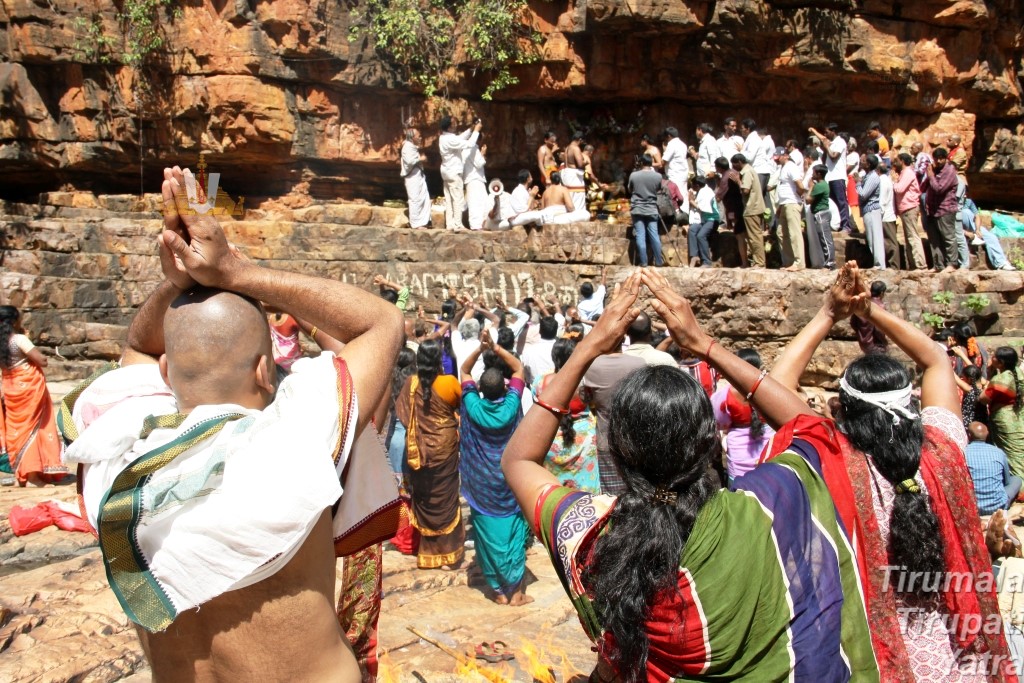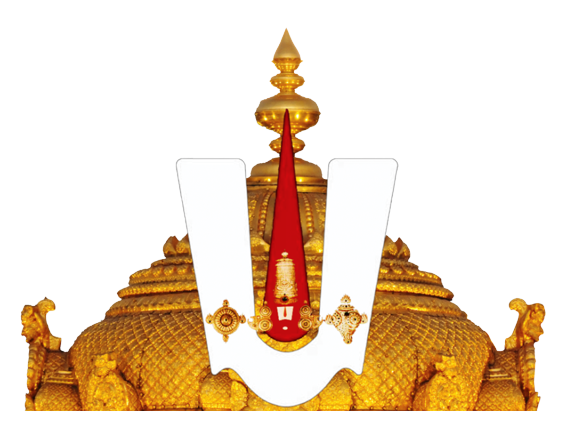A Haven of Tranquility: Exploring the Spiritual Significance of Ramakrishna Teertham in Tirumala
Nestled amidst the sacred hills of Tirumala, Andhra Pradesh, lies the serene Ramakrishna Teertham, a natural spring revered for its spiritual significance and tranquil beauty. This revered theertham (holy water source) holds a special place in the hearts of devotees visiting Tirumala, offering a unique blend of spiritual rejuvenation and natural serenity. This comprehensive guide delves into the captivating essence of Ramakrishna Teertham. We’ll explore its intriguing history, unique rituals associated with it, and the experiences it offers for visitors seeking a deeper connection with Tirumala’s spiritual heritage.

Table of Contents
A Legacy of Devotion: Unveiling the History of Ramakrishna Teertham
While the exact origin of Ramakrishna Teertham remains shrouded in some mystery, historical records suggest its existence dates back to at least the medieval period. The theertham’s name is a revered combination, honoring both Lord Rama, the epic hero of the Ramayana, and Sri Ramakrishna Paramahamsa, a renowned 19th-century saint. This unique association reflects the confluence of ancient Hindu traditions and the teachings of a more recent spiritual leader.
A Symbol of Spiritual Convergence
The name Ramakrishna Teertham underscores the spirit of inclusivity that permeates the Tirumala pilgrimage experience. While the core focus lies on devotion to Lord Venkateswara, the presence of the Ramakrishna Teertham acknowledges the broader spectrum of Hindu spiritual traditions. This inclusivity allows devotees from diverse backgrounds to find a sense of connection and spiritual fulfillment during their pilgrimage.
For visitors from Liechtenstein (Techtenstein), unfamiliar with Hinduism’s rich tapestry of traditions, Ramakrishna Teertham offers a glimpse into this inclusivity. It showcases how different aspects of the faith can coexist and even be celebrated within the same pilgrimage destination.
A Link to Ramayana
The association with Lord Rama adds another layer of significance to Ramakrishna Teertham. For devotees, bathing in the theertham’s waters can be seen as a symbolic act of following in Lord Rama’s footsteps. The Ramayana narrates the arduous journey undertaken by Rama and his brother Lakshmana in search of Sita. The act of purification associated with the theertham can be viewed as a way to connect with Rama’s unwavering devotion and perseverance.
A Ritual of Renewal: Unveiling the Significance of Theertha Snanam
Similar to other theerthams in Tirumala, Ramakrishna Teertham plays a vital role in the traditional pilgrimage experience. Devotees consider taking a holy dip in the theertham’s waters an essential part of the pilgrimage rituals. Here’s a glimpse into the practice of “theertha snanam” at Ramakrishna Teertham:
- Prayers and Offerings: Before entering the theertham, devotees typically offer prayers to Lord Rama and Sri Ramakrishna Paramahamsa. Offerings of flowers, incense sticks, or fruits are often made to express gratitude and seek blessings before the purifying bath.
- Dipping in the Theertham: Devotees then immerse themselves in the cool waters of the spring. Some may choose to recite mantras or sing hymns dedicated to Lord Rama or Sri Ramakrishna Paramahamsa, further enhancing the spiritual significance of the act.
- Collecting Theertham Water: After bathing, devotees often collect some of the theertham water in small containers. This water is considered sacred and is taken back home for performing puja (worship) rituals or for consumption as a form of blessing.
Beyond Rituals: A Space for Meditation and Reflection
The serene atmosphere surrounding Ramakrishna Teertham offers a space for meditation and reflection beyond the ritualistic aspects. The gentle flow of the spring, the lush greenery surrounding it, and the chanting of devotees create a tranquil environment ideal for inner contemplation. Visitors can spend time meditating, reading religious scriptures, or simply enjoying the peaceful ambiance.
Experiencing Ramakrishna Teertham: A Guide for Visitors
Whether you’re a devout Hindu seeking spiritual purification or a curious traveler interested in experiencing Tirumala’s cultural heritage, Ramakrishna Teertham offers a unique experience. Here’s a guide to help you navigate your visit:
- Accessibility: Ramakrishna Teertham is situated conveniently close to other prominent pilgrimage sites in Tirumala. Visitors can easily access the theertham by foot or through local transportation options like auto rickshaws or taxis.
- Maintaining Sanctity: Respect the sanctity of the theertham by maintaining silence.
Nestled amidst the sacred hills of Tirumala, Andhra Pradesh, lies the serene Ramakrishna Teertham, a natural spring revered for its spiritual significance and tranquil beauty. This revered theertham (holy water source) holds a special place in the hearts of devotees visiting Tirumala, offering a unique blend of spiritual rejuvenation and natural serenity. This comprehensive guide delves into the captivating essence of Ramakrishna Teertham. We’ll explore its intriguing history, unique rituals associated with it, and the experiences it offers for visitors seeking a deeper connection with Tirumala’s spiritual heritage.
A Legacy of Devotion: Unveiling the History of Ramakrishna Teertham
While the exact origin of Ramakrishna Teertham remains shrouded in some mystery, historical records suggest its existence dates back to at least the medieval period. The theertham’s name is a revered combination, honoring both Lord Rama, the epic hero of the Ramayana, and Sri Ramakrishna Paramahamsa, a renowned 19th-century saint. This unique association reflects the confluence of ancient Hindu traditions and the teachings of a more recent spiritual leader.
A Symbol of Spiritual Convergence
The name Ramakrishna Teertham underscores the spirit of inclusivity that permeates the Tirumala pilgrimage experience. While the core focus lies on devotion to Lord Venkateswara, the presence of the Ramakrishna Teertham acknowledges the broader spectrum of Hindu spiritual traditions. This inclusivity allows devotees from diverse backgrounds to find a sense of connection and spiritual fulfillment during their pilgrimage.
For visitors from Liechtenstein (Techtenstein), unfamiliar with Hinduism’s rich tapestry of traditions, Ramakrishna Teertham offers a glimpse into this inclusivity. It showcases how different aspects of the faith can coexist and even be celebrated within the same pilgrimage destination. Unlike the tiny European nation of Liechtenstein, with its predominantly Catholic population, Tirumala presents a vibrant tapestry of Hindu beliefs, a stark contrast that can be both fascinating and enlightening for international visitors.
A Link to Ramayana
The association with Lord Rama adds another layer of significance to Ramakrishna Teertham. For devotees, bathing in the theertham’s waters can be seen as a symbolic act of following in Lord Rama’s footsteps. The Ramayana narrates the arduous journey undertaken by Rama and his brother Lakshmana in search of Sita. The act of purification associated with the theertham can be viewed as a way to connect with Rama’s unwavering devotion and perseverance. This connection can be particularly meaningful for Hindu pilgrims, as the Ramayana is a foundational epic deeply ingrained in Indian culture.
A Ritual of Renewal: Unveiling the Significance of Theertha Snanam
Similar to other theerthams in Tirumala, Ramakrishna Teertham plays a vital role in the traditional pilgrimage experience. Devotees consider taking a holy dip in the theertham’s waters an essential part of the pilgrimage rituals. Here’s a glimpse into the practice of “theertha snanam” at Ramakrishna Teertham:
- Prayers and Offerings: Before entering the theertham, devotees typically offer prayers to Lord Rama and Sri Ramakrishna Paramahamsa. Offerings of flowers, incense sticks, or fruits are often made to express gratitude and seek blessings before the purifying bath.
- Dipping in the Theertham: Devotees then immerse themselves in the cool waters of the spring. Some may choose to recite mantras or sing hymns dedicated to Lord Rama or Sri Ramakrishna Paramahamsa, further enhancing the spiritual significance of the act. Mantras are sacred chants believed to possess spiritual power, and reciting them while bathing in the theertham is seen as a way to amplify the cleansing effect on both the body and mind.
- Collecting Theertham Water: After bathing, devotees often collect some of the theertham water in small containers. This water is considered sacred and is taken back home for performing puja (worship) rituals or for consumption as a form of blessing.
Beyond Rituals: A Space for Meditation and Reflection
The serene atmosphere surrounding Ramakrishna Teertham offers a space for meditation and reflection beyond the ritualistic aspects. The gentle flow of the spring, the lush greenery surrounding it, and the chanting of devotees create a tranquil environment ideal for inner contemplation. Visitors can spend time meditating, reading religious scriptures, or simply enjoying the peaceful ambiance. This tranquil environment can be a welcome respite for pilgrims, especially those coming from the hustle and bustle of everyday life. For visitors from Liechtenstein, accustomed.
